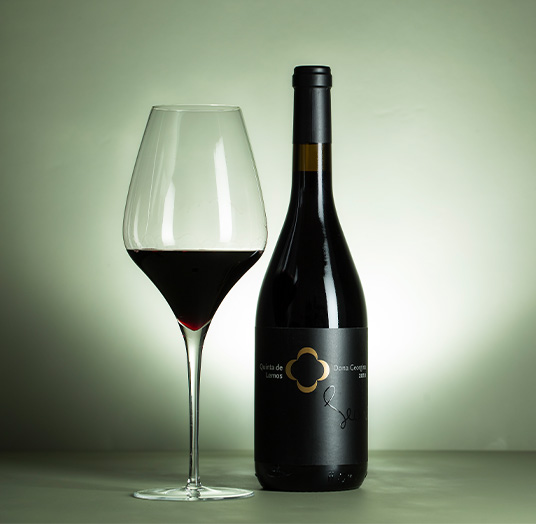Composed of the four red grape varieties from the Dão region, Touriga Nacional, Tinta Roriz, Jaen, and Alfrocheiro, the “Dona Santana 2007 Tinto,” produced by winemaker Hugo Chaves, pairs well with red and white meats, as well as cheeses. It is a wine concentrated in color and fruity aroma, with well-integrated balsamic notes. In the mouth, it presents a good structure with restrained tannins.
The vineyards of Quinta de Lemos are located in the Silgueiros sub-region between 350 and 400 meters above sea level. The vineyard is managed within an integrated protection program, with the application of herbicides prohibited. Harvesting is done manually when the grapes reach optimal ripeness, typically in the second half of September and the first half of October. The harvest is carried out in small boxes of only 10 kg.
It is worth mentioning that Quinta de Lemos was founded in the mid-90s by Celso de Lemos, with the dream of creating exclusive wines. A wine dedicated to his closest friends and family, meant to bring people together around a good conversation. The estate is located in the Dão valley, hidden at an altitude of 340m, where 25 hectares of vineyards and 3000 olive trees are found, totaling 25 hectares of land. Quinta de Lemos has been producing typical Dão wines since 2005.
The Guesthouse of Quinta de Lemos, designed by the Carvalho Araújo studio, is part of the ‘Mesa de Lemos’ restaurant project, open to the public under the command of chef Diogo Rocha. The aim is to make the most of high-quality national products through innovative techniques. The focus of the creations is on the simplicity of flavors. The guesthouse of the Quinta is a private facility that complements the first one and also serves as a showroom for Abyss & Habidecor linens (the first business of Quinta de Lemos and one of the most recognized brands internationally), also functioning as a wine tasting space, in connection with the wine activity of Quinta de Lemos. For the construction of this building, environmentally friendly materials were used, and the final result perfectly reflects this connection to nature that surrounds the site.

